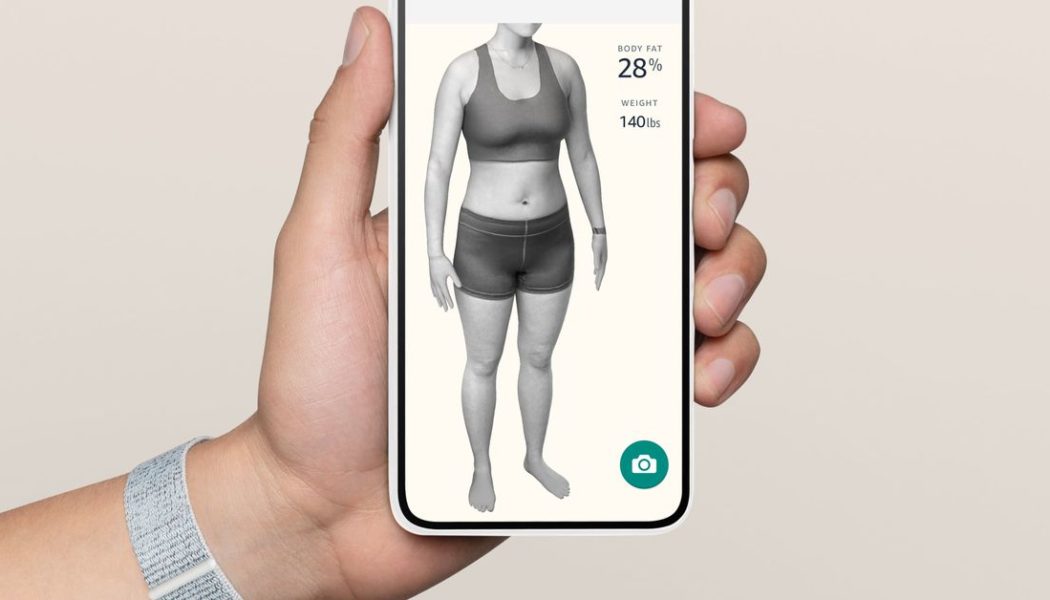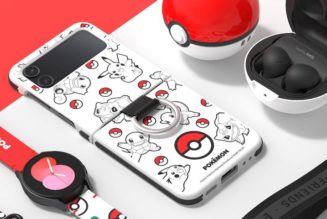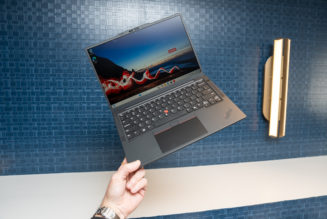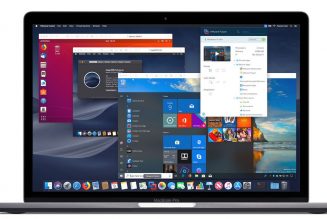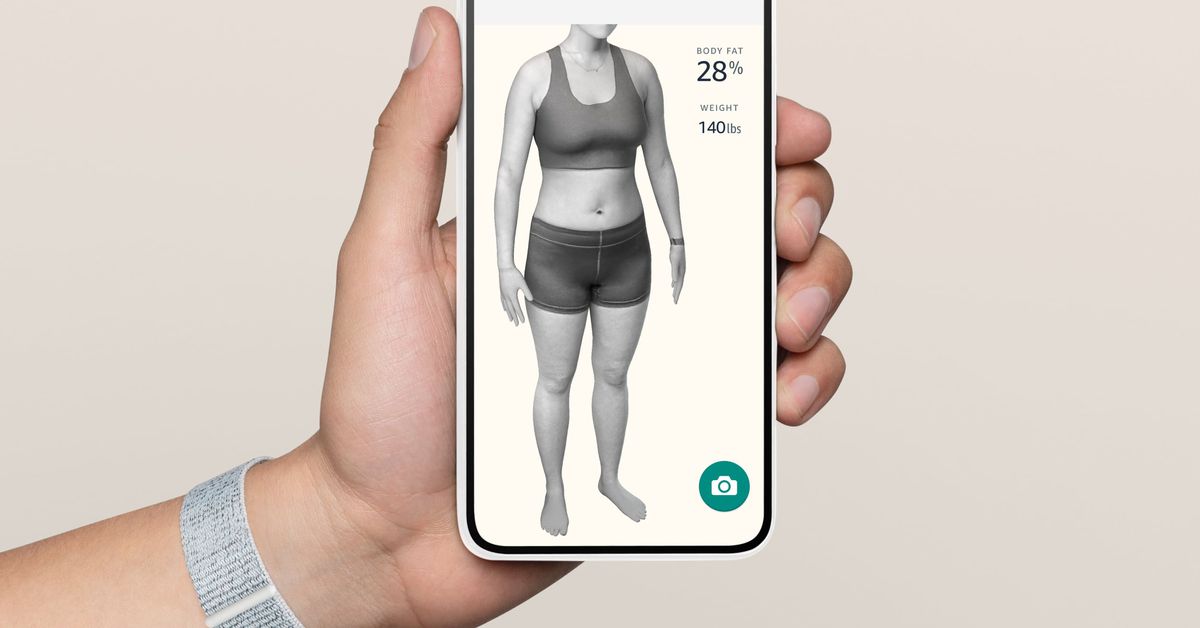
Amazon’s body fat percentage scanner performs better than other, more cumbersome methods of calculating body fat, a new study showed. A body scan is one feature on the Amazon Halo Band subscription service, which the company announced last August.
The Halo Body feature works through smartphone cameras. Users take four photos of their bodies, which are then combined into a 3D image. Then, Amazon’s tool uses machine learning to calculate the user’s body fat percentage. When Amazon launched Halo, the company said it did an internal study to validate the feature. Now, they’ve released a study — which was funded by Amazon, but conducted with leading experts in the field — showing that the tool works well.
The results show that the tool could be a benchmark for people looking to get more information about their bodies, says Diana Thomas, a mathematician who studies body weight regulation at West Point and was not involved in the study. She wouldn’t use it for scientific research, but it could give users another data point. “It gives you more information,” she says. “If you have a high percent body fat flagged by this, it could be a red flag for you.”
Body fat percentage can be a more accurate way to assess someone’s health than their weight. Two people at the same size could have different amounts of fat relative to their overall weight and would have different health risks as a result. Having some body fat is important, but having a high percentage is associated with health problems like heart conditions and diabetes. The percentage of body fat considered healthy varies for people of different ages and sexes. Women, for example, have more body fat than men.
The study used data collected at two sites: Massachusetts General Hospital and Pennington Biomedical Research Center at Louisiana State University. It had 134 participants of varying body types and included 82 women and 52 men. Of the group, 81 were Caucasian, 32 were Black, nine were Asian, four were Hispanic, one was American Indian, and seven were multiracial. It’s a small number of people, but that’s typical with this type of research, which has to run people through expensive and unwieldy tests, Thomas says.
Each person in the study had their body fat percentage calculated through an X-ray technique that shows fat distribution through the body called dual-energy X-ray absorptiometry (DXA), which is the gold standard. The results from those scans were compared to the Amazon system, five scales that calculate body fat (two professional and three consumer), and something called air displacement plethysmography — which uses a pod-shaped device that measures how someone’s body displaces the air.
The study found that the body fat percentages calculated by Amazon Halo Body were closest to those calculated by DXA. It performed better than the air displacement plethysmography device, which is often used to calculate body fat by people studying weight and body composition, but is cumbersome and tricky to conduct correctly. The pods are expensive, have to be housed in a lab, and require people to wear swim caps and tight-fighting clothing. “This showed [Halo Body] is more accurate than the burdensome thing,” Thomas says.
The accuracy held for people of different ages, ethnic backgrounds, and body types. “It makes those same kinds of accuracy measurements for people across the spectrum from lean to obese,” says Steven Heymsfield, a body composition expert at Pennington Biomedical Research Center who worked on the study.
Notably, in the study Halo Body got closer to the DXA’s body fat calculations than the body mass index, or BMI. BMI is often used as a first, crude estimate of someone’s body fat, and it’s calculated based on height and weight. But often, people who are muscular (and weigh more) can have a BMI that says they’re overweight — even if most of that mass is muscle.
BMI is cheap and easy, so it’s appealing as a first look at someone’s body mass and in situations where expensive equipment, like the pod, might not be available. “BMI is still used as the red flag,” Thomas says. But if the Halo Body — which is also easy and cheaper than the lab equipment — is better than BMI, it could be a strong additional resource, she says. “It gives you more accuracy than the crude things we’ve been using.”
There are other devices on the market that also calculate body fat percentage based on images. Heymsfield says he has some in his lab, which range from $4,000 to $20,000. The Halo Band is $99.99 and the subscription for its services is $3.99 per month. This study did not compare Halo Body to those tools. Heymsfield says, though, that based on his experience, it looks like Halo Body could work as well.
Technology like the Halo Body is shaking up the field of body composition research, after years of reliance on expensive devices, Heymsfield says. “The question now is, can we use this for research and clinical purposes, not just for the consumer out of curiosity. Can we use this as a real medical device to get body shape and size, so that people can use it to make clinical decisions?”
It’ll take more validation studies to get to that point. Heymsfield says he’d want to see data on how accurately the Halo Body can estimate waist and hip circumference, for example. Thomas says additional studies should include people with different body types (like athletes).
Testing the tool on more people and people with different body types will also be important for consumer use to make sure everyone is getting information with the same accuracy, Thomas says. But one of the best ways to get that information will be to see what happens when people start to use it in the real world. Then, experts will be able to see what kinds of information people are getting from the tool and if they’re making any changes as a result, she says. “At the end of the day, how do you change public health? It’s not the lab rats, it’s actually the people that are using these tools.”
